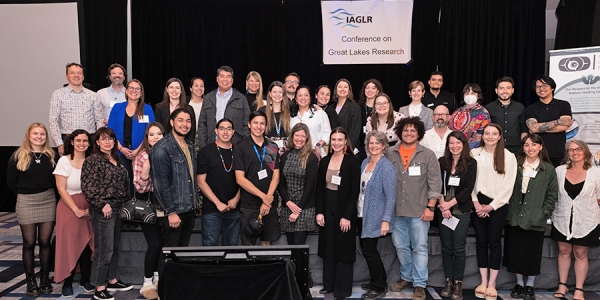 The University of Windsor will host the International Association for Great Lakes Research conference next week. Photo by Stephany Hildebrand.
The University of Windsor will host the International Association for Great Lakes Research conference next week. Photo by Stephany Hildebrand.
With coastline along four of the five Great Lakes, Ontario has a vested interest in ensuring their health, says Mike McKay, director of the Great Lakes Institute for Environmental Research.
The institute will host more than 700 leading experts, researchers, policymakers, and stakeholders from around the world next week for scientific sessions and keynotes during the International Association for Great Lakes Research 67th Annual Conference on Great Lakes Research.
“It will be the fifth time this event has been hosted by the University of Windsor, which reinforces the rich history of Great Lakes research at the University, where healthy Great Lakes have long been included as one of our pillars of strategic research activity,” says Dr. McKay, conference site chair.
“Blue water resources are integral to Ontario’s identity and economy.”
Wih nearly 600 presentations scheduled, the conference offers a platform for the exchange of ideas, collaboration, and the dissemination of cutting-edge research that is vital for the sustainable management of our freshwater ecosystems.
Centered around the theme “Shared Lakes: One Water, One Health,” activities will run May 20 to 24.
“This theme provides an opportunity to share about remediation efforts as well as new stressors that pose a threat to ecosystem health and to all communities dependent on the Great Lakes for water, ecosystem services, economic opportunity and recreation,” McKay says.
Diverse plenary sessions will highlight various aspects of the conference theme:
- Palencia Mobley – Black, Blue, and Green: The Color of Water
- Kelsey Leonard – Water Back: Indigenous Science for Great Lakes Health
- Tracie Baker – Environmental contamination through a One Health lens
“There will be a lot of Indigenous-focused programming,” says McKay. “Likewise, there will be participants and sessions from the African Great Lakes and their African Women in Science program along with an Early Career workshop co-hosted by UWindsor’s FISH-CAST and the African Center for Aquatic Research and Education’s Women in Science program.”
Program co-chair and UWindsor faculty member Catherine Febria worked closely with the IAGLR team and co-chair Carol Miller of Wayne State University to organize the scientific program as well as a mid-conference afternoon of exploration.
Mckay, Dr. Febria, and the local organizing committee have curated a special “Pockets of Awesome” pocket map to complement organized tours including the Ojibway park and prairie, local walking tours such as the McDougall Street Corridor, Art Windsor Essex, drop-in art classes at Incubator Art Lab and more.
A riverside barbecue featuring Indigenous performances and a Thursday night banquet will bring together conference participants to celebrate talents, communities, and collaborations.
“This conference will be a real showcase of the local talent, incredible science, and community partnerships that are rooted here in Windsor,” Febria says.
